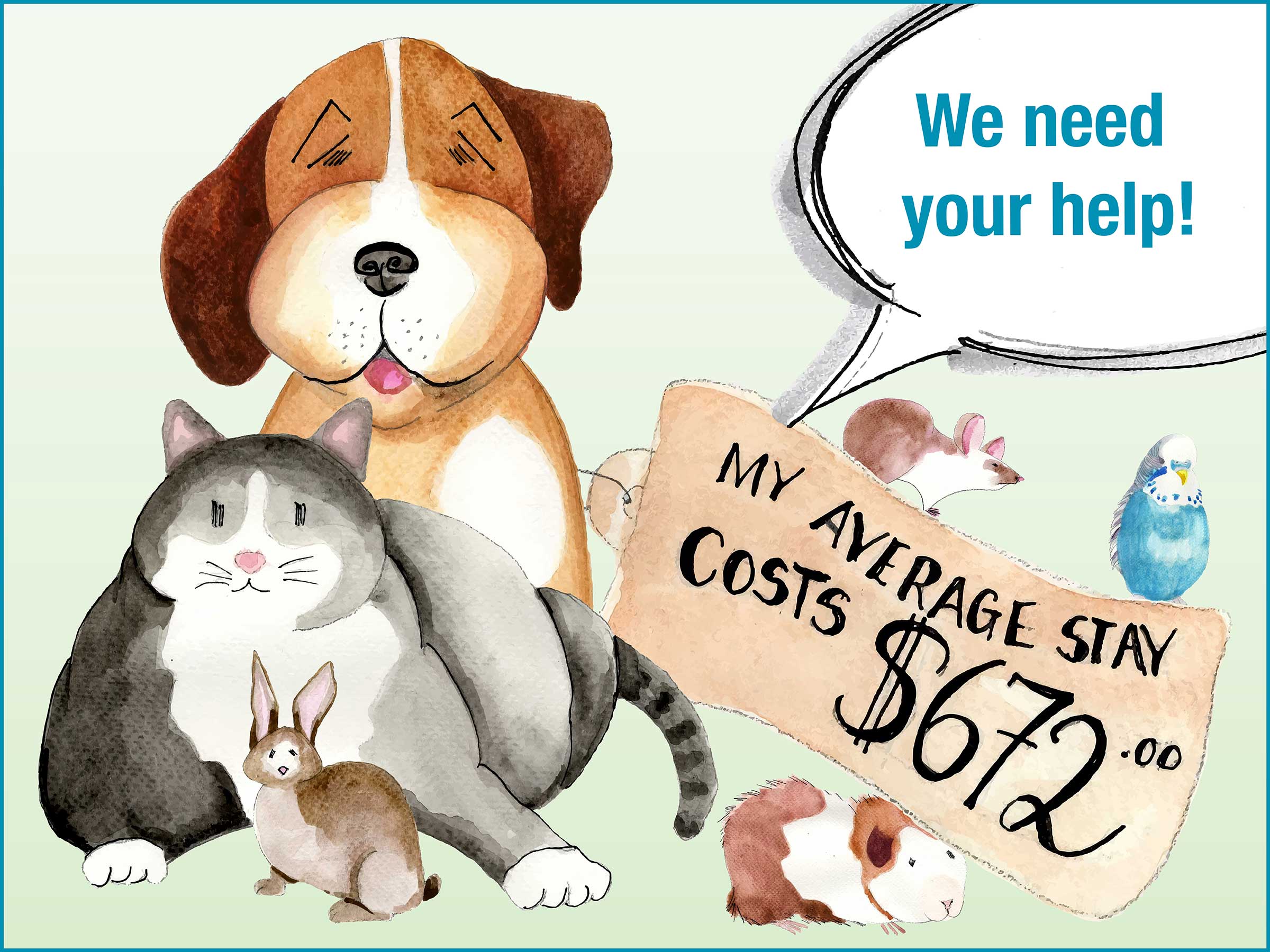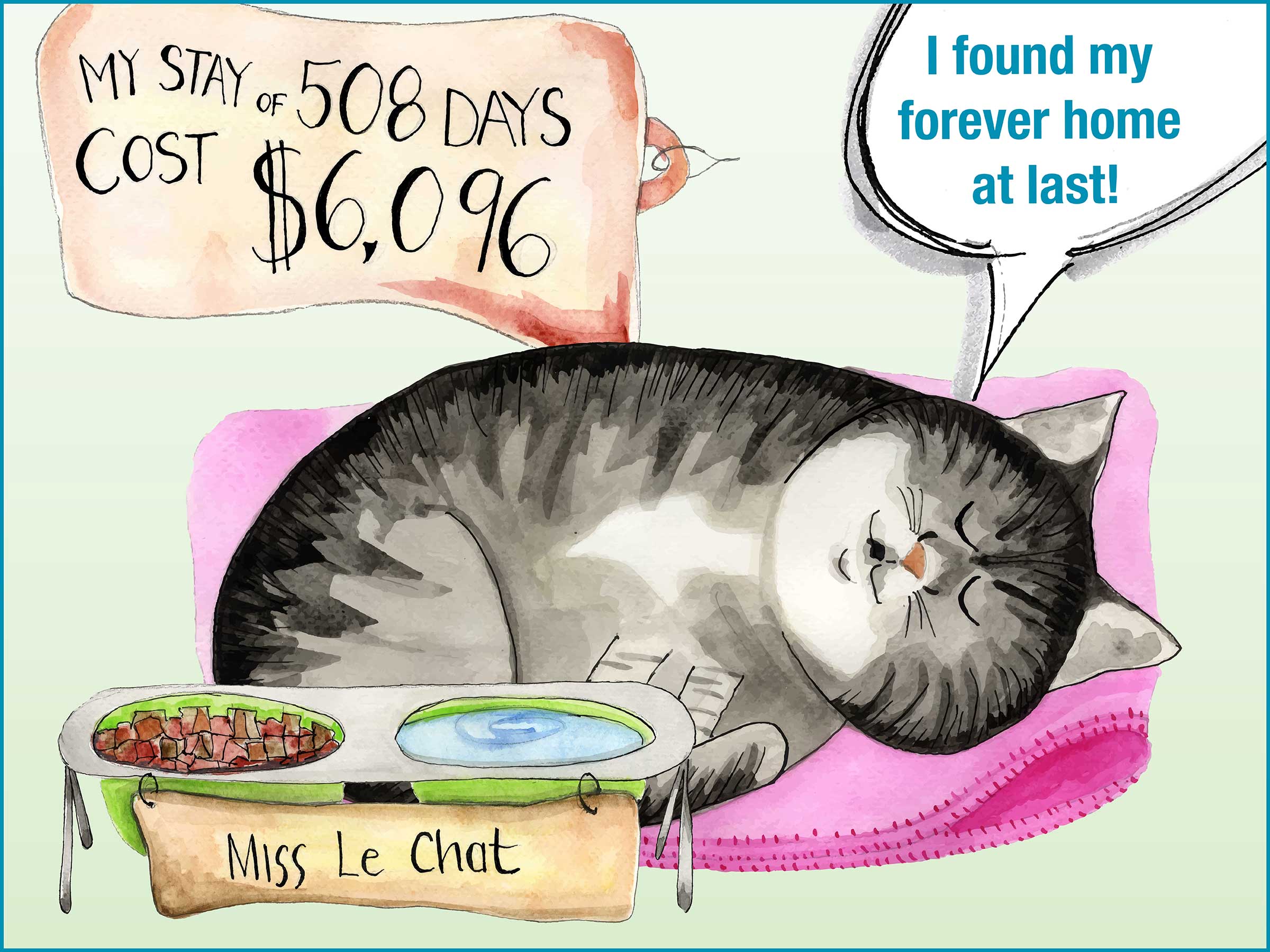For nearly two years, the Kingston Humane Society has had at least 60% more animals than our building can handle. Imagine that for a second; the BEST we've been able to do in the last 20 months, is 230 animals in care. Our building only holds 144. Those numbers on their own are almost inconceivable. Then consider that for 74 straight days, from September 26, 2022 until December 8, 2022 we were over 300 animals in care. That's more than double our existing building capacity. It kind of takes your breath away, doesn't it? It did for us. Six months later, we're still gasping for air and hoping for a moment's rest.
The question we get asked most often is, how did this happen? The answer comes from a combination of unprecedented issues - call it an imperfect storm.
First, it was COVID. As people settled into remote work and remote learning, they wanted a pet to keep them company at home or on those long neighbourhood walks. Initially, our numbers dropped dramatically. Then, as COVID subsided and people returned to their pre-pandemic life, pets didn't fit into their lives anymore. Maybe they didn't have time. Maybe they didn't have the money or the resources. Maybe they didn't think it through. Whatever the reason, surrendered and abandoned animals began to arrive on our doorstep by the hundreds.
When inflation started rising and costs for necessities skyrocketed, pet food and pet care quickly soared out of reach for many. Those that hadn't yet relinquished their animals were so affected by rising costs that they started the second mass exodus of animals into shelter care.
Next came the desperation calls from local clinics, "We have Fluffy here. She's got a urinary blockage and her owners can't afford the treatment. They've agreed to surrender her if you can cover her care. Otherwise, we'll have to euthanize."
How do you say no to that? We're here because we are committed to saving animals. Imagine how difficult it is for us to turn away an animal that, with some surgery or medical intervention, could live a long healthy life. So, 180 animals became 250 animals, which became 318 animals. Our foster volunteers helped as much as they could; for several weeks we had over 200 animals in foster care alone. That eased the burden on our facilities but not on our staff or on our bottom line. We provide food and medicine for all animals whether they're in foster or in the building.
Animal care workers were run off their feet for days and weeks at a time. When they weren't treating and feeding the animals they were cleaning and walking them, and then it was time to treat and feed them again. Lunches and breaks were non-existent and time flew by so quickly hours became minutes and minutes became seconds. I clearly remember sitting in my office on a particularly bleak day in late November; staring at our financials in a desperate and ultimately futile attempt to free up money for more food, more medicine, and most of all, more staff. I've never felt that helpless. The animals wouldn't stop coming and we couldn't possibly squeeze anything more from an exhausted staff or a stagnant bank account.
In early December when our winter direct mail arrived in homes and the community came through with generous donations, we got a reprieve. Those donations combined with our Customer Care team adopting a staggering 199 animals between December and February eased the stress. By February 26th, we had 239 animals in the building; a more reasonable number. Except that 60% over capacity is not reasonable at all; it's too many. For comparison, on February 26, 2019 we had 69 animals in care. Understandably our expenses have risen too; by a whopping $493,397 over the last four years. Thanks to your donations and the creativity of our fundraising staff, we have managed to keep pace with expenses barely.
As we approach another summer with too many animals and not enough resources, we need your help again. In early June, we'll be sending out a post card that explains the daily costs of caring for Kingston's animals.
If it arrives in your mail box, or even if it doesn't, consider how many days of care you can donate. The average length of stay for an animal at the KHS is 56 days. Each day, each animal costs $12. That's an average of $672 per animal. Can you donate four days of care? Six days? A week? Any amount will help relieve the pain and suffering of abandoned, abused and neglected animals. Any amount will reduce the stress on our staff, on our volunteers, or on our aging building. Any amount will give us a moment to catch our breath and get a little bit of rest so we're ready to do it all again tomorrow and the day after that, and the day after that. Because even though we're bursting at the seams, we're not giving up. We'll be here until every pet has a home; until every pet is wanted.
DONATE HERE Spring campaign


